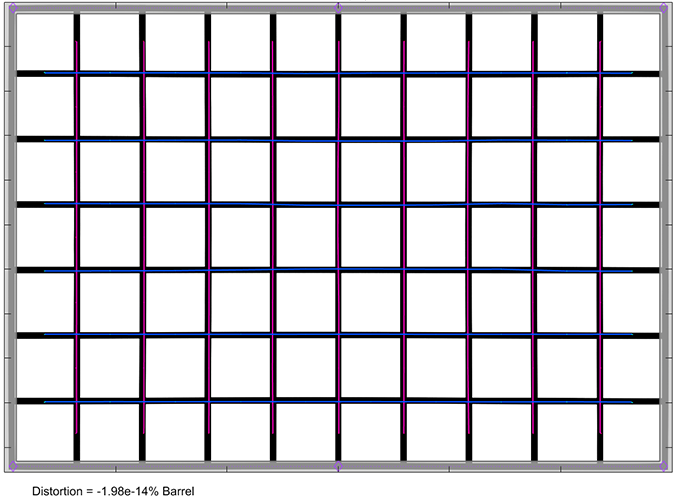|
Laowa 65mm f/2.8 2x Ultra Macro APO - Review / Test Report - Analysis |
|
Lens Reviews -
Fujifilm X
|
|
Page 2 of 3

Distortion
Low image distortions are a bit of a trademark of Laowa lenses and this also applies to the Laowa 65mm f/2.8 2x Ultra Macro APO. In fact there are next to no distortions here. And that's all without digital trickery (yes, Fujifilm, we hope that you are reading this ...).

Vignetting
Medium, tele macro lenses don't produce much vignetting. At maximum aperture, the Laowa shows a light falloff of ~0.7EV (f-stops) - again without any digital correction. You can spot this in critical scenes but it's far from being severe. Stopping down results in a gradual decrease and the issue is mostly gone from around f/5.6 onward (in practical terms).

MTF (resolution)
The resolution characteristic of the Laowa 65mm f/2.8 2x Ultra Macro APO is, overall, outstanding. There's only a minor weakness at f/2.8. The center quality is excellent at this setting and the borders are very good but the extreme corners are only "good" here. The quality of the outer image field is receiving a boost at f/4 and a superb resolution is reached at f/5.6 - across the image frame. Diffraction has a marginal impact at f/8 but even f/16 remains impressive and f/22 is more than just usable. Keep in mind that we don't think that f/22 is actually the true aperture number - as mentioned, we are betting more on f/14 or f/16 here - which would also explain why the results are that good at small aperture settings. Typically diffraction results in very soft images at a true f/22.
The field curvature is negligible. The centering quality of the tested sample was excellent.
Please note that the MTF results are not directly comparable across the different systems!
Below is a simplified summary of the formal findings. The chart shows line widths
per picture height (LW/PH) which can be taken as a measure for sharpness.
If you want to know more about the MTF50 figures you may check out the corresponding
Imatest Explanations

Chromatic Aberrations (CAs)
Lateral CA (color shadows at the image borders) are next to non-existent and nothing to worry about.

Bokeh
While you can use the Laowa lens at conventional focus distances, its primary use-case is macro photography and as such you have to deal with a very shallow depth-of-field - especially so if you explore truly extreme object magnifications.
Let's have a look at out-of-focus highlights first. At f/2.8 they are nicely rendered. The inner zone isn't absolutely smooth but still very good and there's just a hint of an outer ring. Stopped down to f/4, you may notice that the discs are, unfortunately, already becoming a little edgy and the outlining is somewhat emphasized and more so at f/5.6.
 When looking at the highlight rendition across the image field, you may notice that the discs deteriorate towards the edges - this is a mechanical vignetting effect. However, it's comparatively underdeveloped. Stopping down to f/4 or f/5.6 corrects this a little although the most pleasing result is still achieved at f/2.8 in our opinion.
The general rendition in the focus transition zones is very smooth in the image foreground - as shown to the right below.
The more interesting background blur (to the left) is somewhat less ideal with some harsher edges though.
When looking at the highlight rendition across the image field, you may notice that the discs deteriorate towards the edges - this is a mechanical vignetting effect. However, it's comparatively underdeveloped. Stopping down to f/4 or f/5.6 corrects this a little although the most pleasing result is still achieved at f/2.8 in our opinion.
The general rendition in the focus transition zones is very smooth in the image foreground - as shown to the right below.
The more interesting background blur (to the left) is somewhat less ideal with some harsher edges though.

Bokeh Fringing (LoCA)
Bokeh fringing - also referred to as LoCAs or axial CAs - is a color fringing effect on the Z-axis. It shows up as purplish halos in front of the in-focus zone and greenish beyond. Except ... that the Laowa lens has none of these so it's one of the few lenses where this is also corrected. Kudos to Laowa here!
|